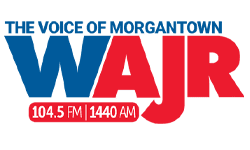MORGANTOWN, W.Va. – The Living in Good Health Together (LIGHT) program operated by Milan Puskar Health Right serves about 800 people in the area, giving them the tools and knowledge to stay disease-free and understand the treatment options available.
During a presentation to Morgantown City Council, Milan Puskar Health Right Executive Director Laura Jones said since 2017, the overdose rate per 100,000 people in Monongalia County has gone from 278 per 100,000 to 358 per 100,000 currently. Jones said the timeline of the increase coincides with the arrival of fentanyl in the Morgantown area.
In the first eight months of this year, the program has distributed needles and safe-use supplies to 820 people in four clinics a week. Included in that total are 156 people who are new to the program—not new to addiction but new to the program. By state directive, needles are to be exchanged one-to-one, and Jones said their current rate is about 78 percent.
Sixty of those needles are tested by the West Virginia University School of Public Health each week to determine what substances are in the area. The test results can also be used if an unsafe batch of drugs makes it into the community.
“Fentanyl, methamphetamine, and Xylazine—Xylazine is typically called “Tranq”—is a horse tranquilizer that acts like an opioid,” Jones said. “Those are the top ones, two, and three.”
A registered nurse has been hired to oversee the LIGHT program and work with people on everything from wounds to treatment. Jones said the nurse provides basic services and has been overwhelmed by the volume of wound care.
“Unfortunately, it (Tranq) causes wounds that begin on the inside and come outside,” Jones said. “Not wounds related to the injection site, but wounds anywhere on your body.”
Recently, the USA Today filmed a segment there applauding their efforts in the LIGHT program and distributing 22,000 doses of Narcan. Jones said the segment will also become a permanent feature of their website.
“We have received a lot fewer reports of syringes in large volumes in the community,” Jones said. “But I can only say we have not been called to do massive clean-ups like we have in the past.”
The organization has received an Outreach Grant from the U.S. Department of Housing and Urban Development to help some of the most troubled people dealing with addiction who are homeless get into permanent housing.
“Our job is to do the outreach and make sure they get attached to the Bartlett House or the coalition, and all of their paperwork is ready to go, so when a housing voucher is available, they’re ready to get into care.”
In the future, a public information campaign is expected to inform residents about the importance of harm reduction. Jones said services like the LIGHT program don’t encourage or enable drug usage, but they can keep people alive until they do find a treatment program that will help them live a clean and sober life.
“We’ve been doing research based on comments we’ve seen on Facebook, and it’s very clear there is a portion of our community that has a really poor understanding of addiction and also the principles of harm reduction.”


